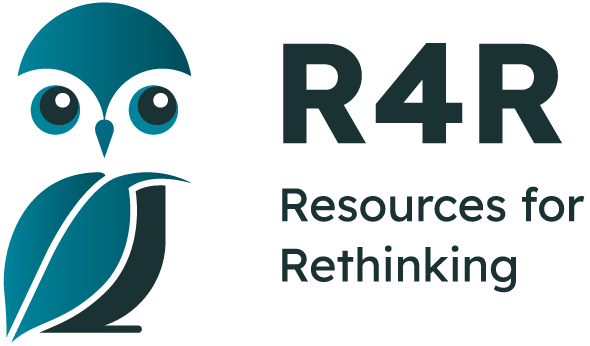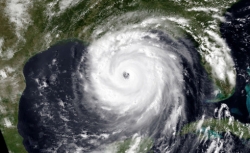Search for Resources
Description
In this guided inquiry, students examine the question, "is climate change increasing the frequency and intensity of extreme weather events?” Taking on the role of investigative reporters, they listen to a collection of interviews and review scientific reports from climate change experts. In doing so, students will see how opinions have changed ,and consensus has developed during the past decade. The goals are for students to develop an understanding of the relationship between climate and weather and to arrive at their own determination of the relationship between climate change and extreme weather based on the results of their investigation.
Teachers can choose from the following activities:
Where do you stand? Students explore the difference between weather and climate by organizing photos of weather-related phenomena under the appropriate heading.
Listening with a Question in Mind: Students listen to a number of interviews with meteorologists and climate scientists to determine the different positions on the relationship between extreme weather events and climate change.
One Quote One Position: After reading scientific reports by climate experts, students choose one quote that summarizes the opinion of each author.
Changing Minds Timeline: Based on the interviews and the scientific reports, students determine how opinion on the connection between climate change and extreme weather has changed within the scientific community over time.
Capture the Essence of Opinion: Using the scientific reports and written transcripts of the interviews, students highlight specific words and text in various colours and prepare a collage that illustrates the different opinions and views expressed.
Where are we Now? In this culminating activity, students review the recent National Climate Assessment to determine what gaps in knowledge from their research into the question of climate change as a cause of extreme weather have been resolved.
The resource includes links to all of the materials, interviews and reports necessary for students to successfully complete this inquiry.
General Assessment
What skills does this resource explicitly teach?
Deciphering meaning in scientific text.
Strengths
- The resource addresses an important question and one that is relevant to the student's own experience.
- The resource is thorough and easy to use.
- All materials needed to complete the activities are provided.
Weaknesses
- The resource would be improved with the inclusion of an action component in which students might apply what they have learned for the benefit of their community.
Recommendation of how and where to use it
This resource will support teaching units that address the impacts of climate change. It will also prove to be a useful teaching tool for outcomes that focus on the nature and process of science.
Relevant Curriculum Units
The following tool will allow you to explore the relevant curriculum matches for this resource. To start, select a province listed below.
- Step 1Select a province
- Alberta
- British Columbia
- Manitoba
- Newfoundland & Labrador
- Northwest Territories
- Step 2Select a grade level
- Grade 9
- Step 3Select a subject
- Science
- Step 4Relevant matches
- Science 9: The biosphere, geosphere, hydrosphere, and atmosphere are interconnected, as matter cycles and energy flows through them.
- Grade 10
- Step 3Select a subject
- Science
- Step 4Relevant matches
- Experiential Science 10, Terrestial Systems: Climatology and Meteorology
- Science 10: Energy Flow in Global Systems
- Nova Scotia
- Step 2Select a grade level
- Grade 9
- Step 3Select a subject
- Social Studies
- Step 4Relevant matches
- Citizenship 9: Engaged Citizenship
- Grade 10
- Nunavut
- Ontario
- Step 2Select a grade level
- Grade 9
- Step 3Select a subject
- Geography
- Step 4Relevant matches
- Issues in Canadian Geography (Academic): Geographic Inquiry and Skill Development
- Grade 10
- Step 3Select a subject
- Science
- Step 4Relevant matches
- Science (Academic):Earth and Space Science: Climate Change
- Science (Applied)::Earth and Space Science: Earth's Dynamic Climate
- Prince Edward Island
- Step 2Select a grade level
- Grade 9
- Step 3Select a subject
- Science
- Step 4Relevant matches
- Science 9: Nature of Science
- Science 9: Procedural Knowledge
- Social Studies
- Step 4Relevant matches
- Interdependence: Atlantic Canada in the Global Community: Environment in the Global Community
- Grade 10
- Quebec
- Step 2Select a grade level
- Grade 10
- Step 3Select a subject
- Science & Technology
- Step 4Relevant matches
- Applied Science & Technology: The Earth and Space
- Environmental Science & Technology: The Earth and Space
- Science & Technology: The Earth and Space
- Science and the Environment: The Earth and Space
- Saskatchewan
Themes Addressed
Air, Atmosphere & Climate (2)
- Climate Change
- Weather
Science and Technology (1)
- Analysing Conventional Science
Sustainability Education Principles
| Principle | Rating | Explanation |
|---|---|---|
| Consideration of Alternative Perspectives | Very Good | Considering various opinions on the question, "is climate change increasing the frequency of extreme weather events" is a core component of the students' investigation. |
Consideration of Alternative Perspectives:
| ||
| Multiple Dimensions of Problems & Solutions | Good | The economic and social consequences of extreme weather events are made clear in the recordings and reports. Does the evidence support climate change as the cause? This is the question students investigate. |
| Multiple Dimensions of Problems & Solutions: Effectively addresses the environmental, economic and social dimensions of the issue(s) being explored.
| ||
| Respects Complexity | Very Good | The evidence students examine in the form of reports and interviews reveals the complexities involved. |
| Respects Complexity: The complexity of the problems/issues being discussed is respected. | ||
| Acting on Learning | Poor/Not considered | |
| Acting on Learning: Learning moves from understanding issues to working towards positive change — in personal lifestyle, in school, in the community, or for the planet
| ||
| Values Education | Good | The goal of the inquiry is for students to form and articulate their own beliefs surrounding human-caused climate change and extreme weather. |
| Values Education: Students are explicitly provided with opportunities to identify, clarify and express their own beliefs/values. | ||
| Empathy & Respect for Humans | Satisfactory | In exploring and discussing the effects of extreme weather, attention can and should be directed to those poorer nations and people who are often most affected. |
| Empathy & Respect for Humans: Empathy and respect are fostered for diverse groups of humans (including different genders, ethnic groups, sexual preferences, etc.). | ||
| Personal Affinity with Earth | Good | The attention paid to extreme weather events can foster concern for climate impacts on the natural world. |
| Personal Affinity with Earth: Encourages a personal affinity with -the natural world.
| ||
| Locally-Focused Learning | Satisfactory | While the reports and interviews provided may not describe local events, parallels can be drawn to similar extreme weather that has impacted the students' own communities. |
| Locally-Focused Learning: Includes learning experiences that take advantage of issues/elements within the local community.
| ||
| Past, Present & Future | Good | The investigation highlights how information, evidence and consensus have evolved over a ten year period. |
| Past, Present & Future: Promotes an understanding of the past, a sense of the present, and a positive vision for the future. | ||
Pedagogical Approaches
| Principle | Rating | Explanation |
|---|---|---|
| Open-Ended Instruction | Good | Although guided, the inquiry is structured to present a variety of perspectives over time which students must evaluate. |
| Open-Ended Instruction
: Lessons are structured so that multiple/complex answers are possible; students are not steered toward one 'right' answer. | ||
| Integrated Learning | Satisfactory | The activities incorporate themes and content from science, social studies and language arts. |
| Integrated Learning: Learning brings together content and skills from more than one subject area
| ||
| Inquiry Learning | Satisfactory | The resource proposes the question but supports a student-driven investigation. |
| Inquiry Learning: Learning is directed by questions, problems, or challenges that students work to address.
| ||
| Differentiated Instruction | Poor/Not considered | The activities largely depend on the analysis of written and spoken text. |
| Differentiated Instruction: Activities address a range of student learning styles, abilities and readiness.
| ||
| Experiential Learning | Satisfactory | The nature of the inquiry places students in the role of investigative reporters. |
| Experiential Learning: Authentic learning experiences are provided
| ||
| Cooperative Learning | Satisfactory | Students work both individually and in small groups. Some of the activities promote the use of a 'jig saw' format. |
| Cooperative Learning: Group and cooperative learning strategies are a priority.
| ||
| Assessment & Evaluation | Poor/Not considered | Assessment and evaluation tools are not included. |
| Assessment & Evaluation: Tools are provided that help students and teachers to capture formative and summative information about students' learning and performance. These tools may include reflection questions, checklists, rubrics, etc. | ||
| Peer Teaching | Satisfactory | Limited peer teaching opportunities are provided. |
| Peer Teaching: Provides opportunities for students to actively present their knowledge and skills to peers and/or act as teachers and mentors.
| ||
| Case Studies | Satisfactory | Actual extreme weather events are referenced and described in the information students review as part of their investigation. |
| Case Studies: Relevant case studies are included. Case studies are thorough descriptions of real events from real situations that students use to explore concepts in an authentic context. | ||
| Locus of Control | Poor/Not considered | Such opportunities are limited. |
| Locus of Control: Meaningful opportunities are provided for students to choose elements of program content, the medium in which they wish to work, and/or to go deeper into a chosen issue. | ||

